Grilled Alaskan Sockeye Salmon with Orange Salsa
Wild Alaskan sockeye salmon is now in season and you can find it reasonably at many grocery stores. I was at Fred Meyer the other day and they had it for $7.99 per pound.
Wild sockeye is unique among its salmon cousins for its flavor and very bright color. If you compare it to other salmon in the fish case, it will inevitably have the darkest, richest red color. Also its robust flavor makes it ideal for grilling, smoking, or topping with a strong sauce that may overwhelm a milder salmon such as coho.
Sockeyes are a little different than their other salmon cousins in that once they hatch, they spend the first half of their lives in freshwater lakes before they head out to sea.
According to scientists at the NOAA Fisheries, as the time for migration to the sea approaches for the anadromous forms, the juvenile loses its parr marks, which are a pattern of vertical bars and spots useful for camouflage. They then gain the dark back and light belly coloration used by fish living in open water. During this time their gills and kidneys begin to change so that they can process salt water. These smolts, as they are called, initially stay close to the shore and feed on insects and plankton. Once they move offshore, their diet turns mainly to amphipods, copepods, squid and some fishes.
Most sockeye salmon stay at sea for two years, returning to spawn in their fourth year, but some may be five or six years old when they spawn.
There are some sockeye that are non-anadromous, meaning that they spend their entire lives in freshwater. Non-anadromous sockeye in the Pacific Northwest are known as kokanee. Occasionally, a proportion of the juveniles in an anadromous sockeye salmon population will remain in their rearing lake environment throughout life and will be observed on the spawning grounds together with their anadromous siblings. Taxonomically, the kokanee and sockeye salmon do not differ.
The size of an adult returning to spawn may measure up to 2.8 feet (86 cm) in length and weigh an average of 8 pounds (3.6 kg).
The adult spawners are unique in appearance. They typically turn bright red, with a green head; hence, they are commonly called “red” salmon in Alaska. During the ocean and adult migratory phases, sockeye often have a bluish back and silver sides, giving rise to another common name, “bluebacks.” The name “sockeye” is thought to have been a corruption of various Indian tribes’ word, “sukkai.”
Adults migrate from a marine environment into freshwater streams and rivers or lakes of their birth in order to mate (called anadromy). They spawn only once and then die (called semelparity). Sockeye salmon exhibit a wide variety of life history patterns that reflect varying dependency on the freshwater environment. With the exception of certain river-type and sea-type populations, the vast majority of sockeye salmon spawn in or near lakes, where the juveniles rear for 1 to 3 years prior to migrating to sea. For this reason, the major distribution and abundance of large sockeye salmon stocks are closely related to the location of rivers that have accessible lakes in their watersheds for juvenile rearing.
But enough about the science of sockeye.
One of our favorite ways of enjoying sockeye this time of year is smoking with a flavored rub comprised of seasonings and spices. Another, less time-consuming method and one that lets you enjoy the flavor of the fish more, is to grill the fish fillet and then top it with a simple salsa made from fruit.
Mango and orange make great main ingredients for use in fruit salsas to accompany sockeye because their sweet flavor enhances the flavor of the fish. All you need to do is add some chopped cilantro, shallots, a little fruit juice, and soy or ponzu sauce and toasted sesame oil, and you’re good to go!
Grilled Sockeye Salmon with Orange Salsa
- 1 naval orange, peeled and sectioned (you can also substitute fresh or canned mangos, thinly sliced)
- 1 cup (240 ml.) orange juice
- 3 tablespoons (45 ml.) ponzu or soy sauce
- 2 tablespoons (30 ml.) toasted seasame oil
- 2 tablespoons (30 ml.) finely sliced shallots
- 1 tablespoon (15 ml.) finely chopped cilantro
- Make the salsa by combining orange sections, orange juice, 1 tablespoon (15 ml.) ponzu or soy, 1 tablespoon (15 ml.) toasted sesame oil, shallots and cilantro in a bowl. Mix well and refrigerate.
- Marinate the salmon with the remaining 2 tablespoons (30 ml.) of ponzu or soy and 1 tablespoon (15 ml.) of toasted sesame oil for about an hour in the refrigerator.
- Get your coals started and begin grilling the salmon fillet with the skin side facing the coals. After a few minutes, taking care with a large flat spatula, turn over the fillet so that it remains in one piece.
- You should need to grill salmon only about 5-10 minutes total. The fish will cook very quickly over coals. Carefully remove the salmon from the grill, and place in a serving platter skin-side down, top with salsa and serve.
Enjoy!
— Vic
Category: Seafood
About the Author (Author Profile)
Victor Panichkul is a journalist and writer by training; a cook, wine lover and photographer by passion; and a lover of the outdoors since moving to Oregon more than 10 years ago. He is a native of Bangkok, Thailand.






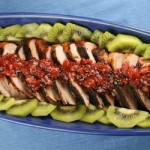
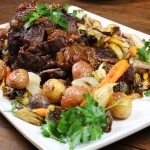
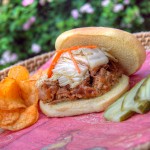
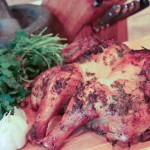


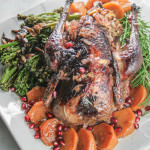

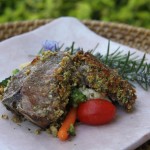
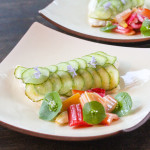
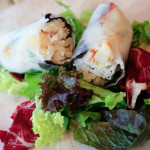
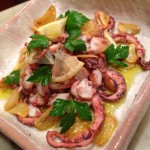



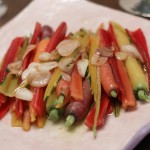
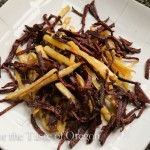


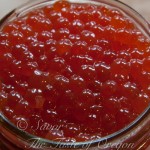
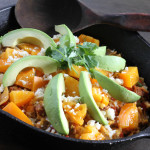
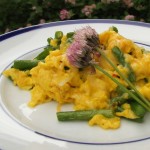
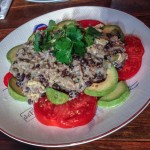

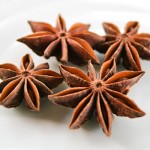
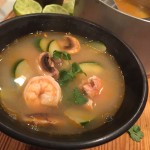
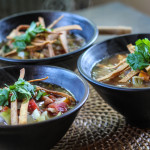
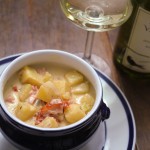
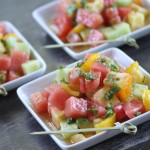


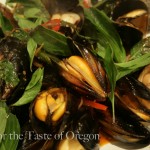





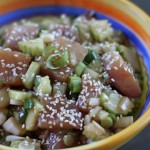
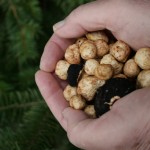
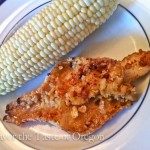


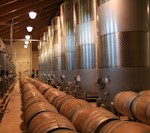
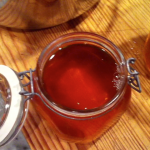





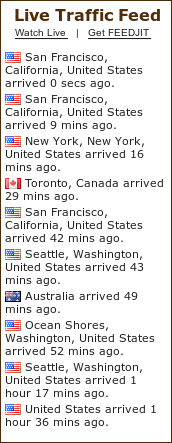





When are you making it again?